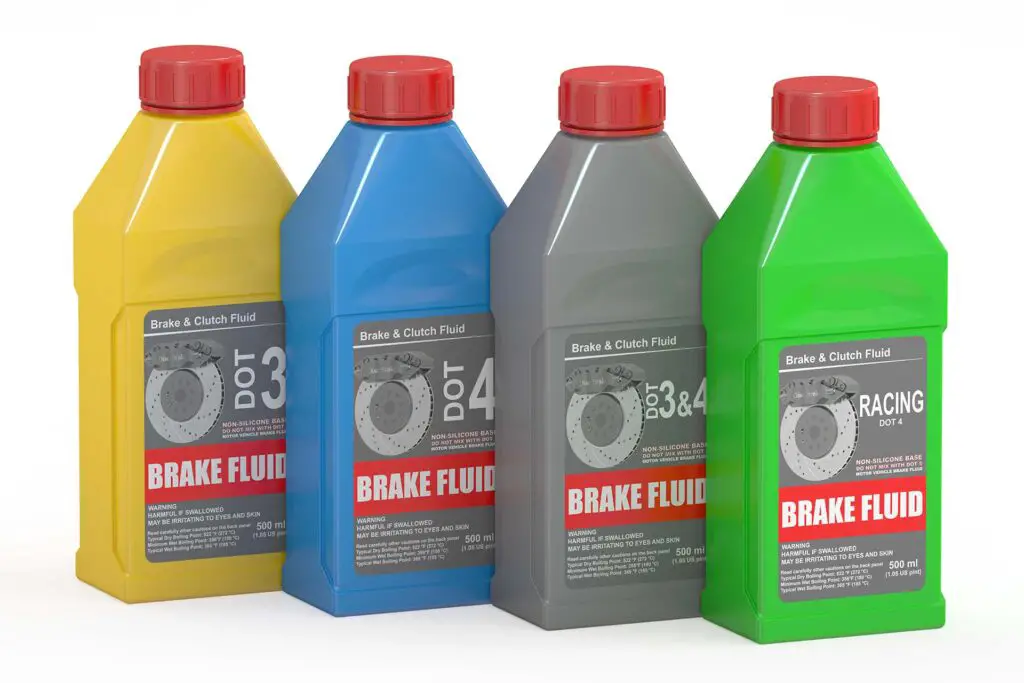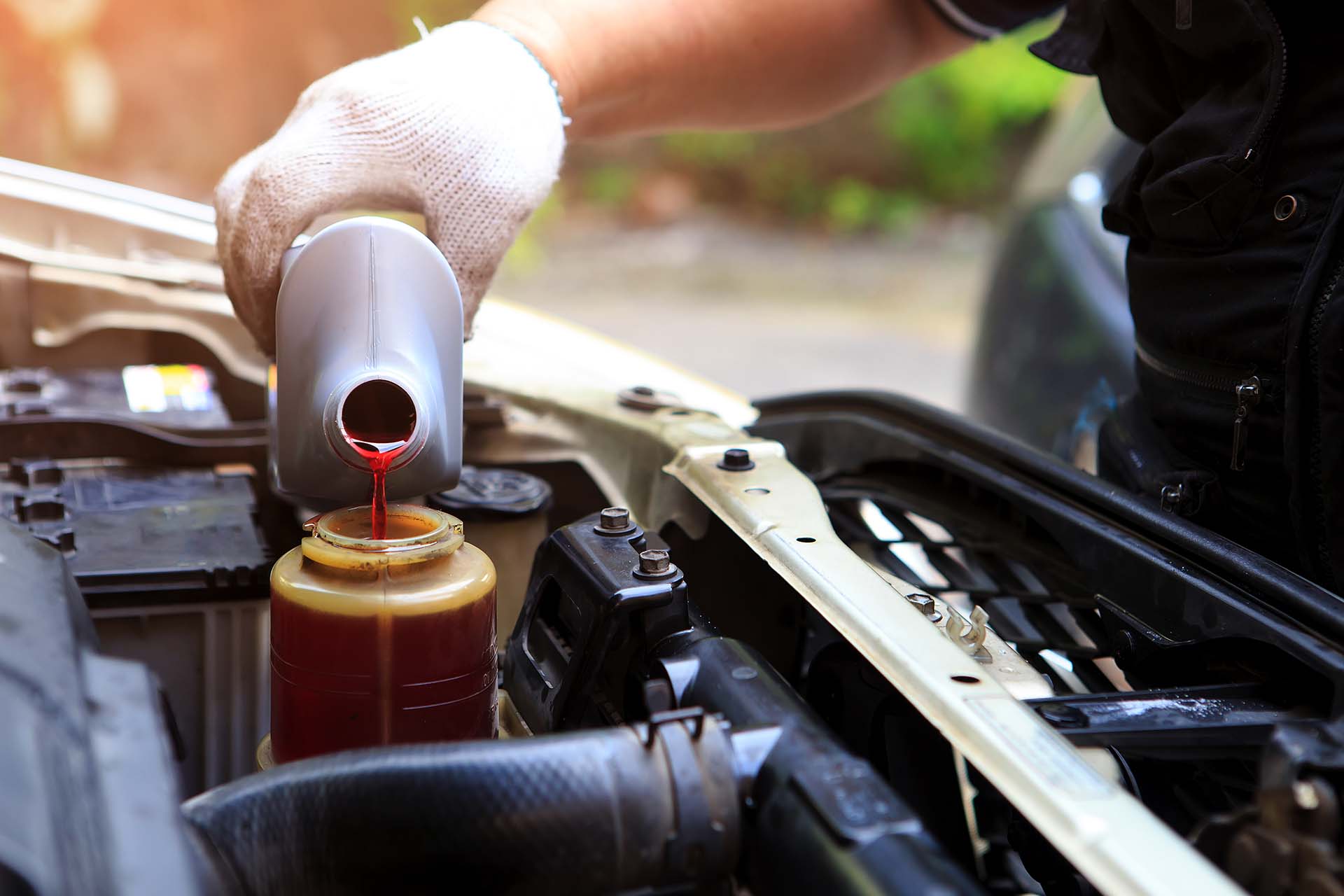If you’re like most people, the very mention of brake fluid conjures up images of an intense, technical process that’s best left to the pros. However, as a driver, it’s really not that complicated to learn how to add brake fluid and other similar maintenance tasks. Here’s everything you need to know to get your prized ride purring for miles to come.
What Is Brake Fluid?
Before we get into this crucial maintenance task, let’s get a bit technical and talk about what exactly this liquid is. Basically, it is a type of hydraulic fluid that is used in automobiles to activate the brake system. It is typically glycol-based, which means it contains a large percentage of ethylene glycol. For all of you who skipped chemistry in school, this chemical is used because of its high boiling point, which means it can withstand the extreme temperatures that are generated by braking.
Besides being glycol-based, this automotive liquid is hygroscopic, which means it can absorb moisture from the atmosphere. According to Mighty Auto Parts, it can absorb as much as 2% of its weight in a year’s time and this can affect its performance negatively. So, when the bottle is stashed away in your garage, make sure it’s properly sealed so that every time you top it up in your ride, you know it’ll do its job just fine.

What Types of Brake Fluid Are There?
Before you get under the hood of your prized ride and start tinkering around, it’s important to get the right product that you’ll be pouring into it. To find the perfect match, there are several factors to consider, including compatibility, boiling point, and moisture resistance. Let’s take a look at exactly what types of products are available:
- DOT 3 – the most common option, with a glycol base and a boiling point of 205 °C (401 °F), that will work with most braking systems,
- DOT 4 – also glycol-based but has a greater resistance to compressibility and a higher boiling point of 230 °C (446 °F), making it the perfect choice for high-performance and off-road vehicles,
- DOT 5 – silicone-based, which gives it some advantages, like the fact it won’t damage your paint job if accidental spillage occurs,
- DOT 5.1 – very similar to DOT 5 because it has the same silicone base but with a slightly lower boiling point of 250 °C (482 °F).
What Are the Benefits of Brake Fluid?
First and foremost, properly using brake fluid increases safety levels – this might be obvious, but it’s a crucial advantage. Without it, your four-wheeler won’t be able to stop, which will put you and others in danger. In fact, according to recent studies, 2% of all car crashes are due to vehicle defects and brake malfunction accounts for 22% of them, second only to worn-out, damaged tires. There’s really no doubt about just how much brakes are important!
On top of that, this automotive liquid can also boost fuel efficiency, and if you know a thing or two about the cost of owning a car, you’ll know that every cent counts. Keeping it fresh can help your braking system run smoothly, which means less strain on your engine and better overall performance.

Why Do You Need to Add Brake Fluid to Your Car?
As we’ve just discussed, this special automotive product is crucial for the efficient operation of your four-wheeler. The brake pads won’t function properly if the levels are too low, if the liquid is contaminated, or if there is too much water in it. So, to avoid hurting yourself or somebody else while in traffic, monitor and add this fluid from time to time.
How Often Do You Need to Add Brake Fluid?
We all know that automotive oil is considered the lifeblood of the engine. It is what keeps it going. However, brake fluid is just as important because it guarantees that the four-wheeler can stop when you need it to. To ensure this, adding brake fluid is a must, and it should be done as often as the manufacturer recommends.
Some manufacturers recommend replacing the fluid every two years, while others recommend doing it every 45,000 miles. Just to be sure you are doing it as often as you should, consult the owner’s manual. With a little bit of research, you’ll know exactly what your prized ride needs.
What Are the Signs of Low Brake Fluid?
So, as you see, there’s really no specific timeframe when it comes to how often you should change this automotive liquid. However, there are a couple of warning signals, besides the obvious one of brake malfunction, that can give you a hint:
- Pedal issues – pedals could become more difficult to push when the fluid ages or leak,
- Blinking ABS Lights – the car’s ABS light refers to the anti-lock braking system, and it alerts you to a problem when it glows,
- Poor brake pad performance – the brakes could make a strange sound, such as squealing or grinding,
- Burning scent – if you smell burnt rubber or metal, stop right away to allow the brakes to cool so that they don’t harm the wheels.
Ignoring these signs could lead to bigger problems down the road – literally. It might not be the flashiest part of vehicle maintenance, but it plays a major role in keeping you safe. A small issue with it can affect your stopping distance and control on the road. So, paying attention to the little things can save you from big trouble (and big repair bills) later on.

How to Add Brake Fluid to a Car – Step-By-Step Guide
This maintenance task is something you don’t just know. However, that doesn’t mean it’s something super complicated. If you know how to change a flat tire, you’ll master this in no time. To help you make it a success, here’s a detailed guide:
Step 1 – Park Your Vehicle on a Flat Terrain
To be able to tell the levels correctly, it should be parked on a flat surface. If it is parked on steep terrain, you won’t get an accurate read. Don’t forget that if the vehicle has anti-lock braking systems, you need to depress the pedal before doing this first step.
Step 2 – Pop the Hood and Find the Master Cylinder
Turn off the parked four-wheeler, pop the hood, and look for the master cylinder. It will probably be on the driver’s side of the vehicle in the back of the engine bay. Depending on the model of the vehicle, there might be a plastic panel covering it.
Step 3 – Open the Tank
When you locate the master cylinder, carefully open the tank. It’s a good idea to wear some gloves for this because the liquid can strip the paint from the metal, so imagine what it can do to your skin. Inspect the levels by checking the tank’s MAX and MIN marks. Then, inspect the color of the liquid. Conduct a dip test and check if some debris is floating around. If they are, you should call a trusted mechanic to drain the system.
Step 4 – It’s Refill Time
After you checked the levels in the tank and made sure the color was good and that there was no debris floating around, it’s finally time to refill. Get the product and fill the tank just a bit under the MAX mark. Ensure that the tank is not overfilled because it can spill and then cause damage. After you are done, wipe the cap clean (from inside and outside, just to be safe), and then put it back on. Press it just to be sure it falls into place the right way.
Step 5 – Take Your Ride for a Test Spin
It’s time for a test drive to make sure everything is still functioning properly after all that hard work. There’s no need to drive recklessly on the open road. Instead, take a drive around the neighborhood. When you get back, check the tank one more to make sure nothing is leaking, and that’s it, you are done.
What Is the Best Brake Fluid for Your Car?
All of us want the best of the best for our four-wheelers (for example, we want squeaky clean seat belts or efficiently working U-joints). This can be applied to this automotive liquid as well. There are many different products available on the market that you can use. However, if you want to get the best performance, choose one from the table below.
| Product | Summary | Pros | Cons |
| Motul Dot-4 100 Percent Synthetic Racing Brake Fluid | This synthetic non-silicone fluid is designed for hydraulic brake systems and is suitable for many different types of vehicles | Gives more protection against water, increases performance, and has no expiration date | The design of the bottle can cause spillage, it is also a bit pricier and needs to be changed often due to its characteristics |
| Prestone DOT 3 Synthetic Brake Fluid | This product offers additional safety because both its wet and dry boiling temperatures are higher than the minimum set by the government | The product is long-lasting and can withstand heat | When ordering online, it might come without a lid |
| Lucas Oil Brake Fluid | It is one of the top racing brands. Additionally, it lasts longer than comparable rival brands | This product surpasses DOT3 and DOT4 requirements | The product is a bit pricier, and it requires more frequent replacement |
Keeping Your Prized Ride in Top Shape Is the Most Important Thing
As a driver, you know that having a four-wheeler is a big investment, one that should be taken care of. This means more than just remembering to clean the steering wheel when it gets dirty. There’s also routine maintenance and small repairs to make it run smoothly. Neglecting things like bad spark plugs or low levels of brake fluid can result in hefty repair bills down the road. So, keep your brakes checked, and your prized ride will run smoothly and safely no matter what.








